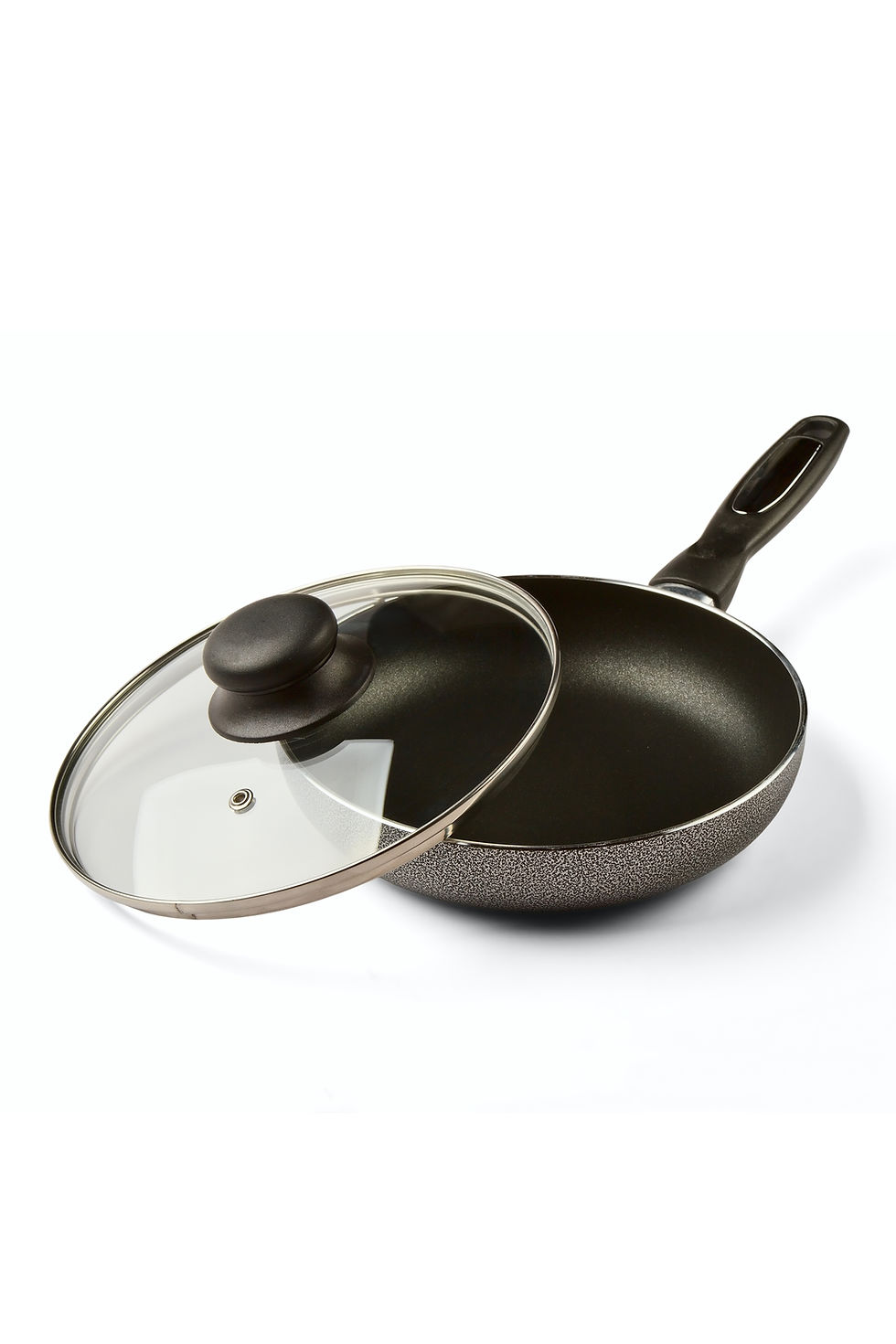Are Plastics Disrupting Your Hormones? What You Need to Know
- homeopathichub

- May 13
- 3 min read

That Scratch on Your Frying Pan? It Could Be Leaching Plastic Into Your Food.
Let’s be honest, trying to live a low-tox life these days can feel like a full-time job.
There’s just so much information. What to swap first? What actually makes the biggest difference? And is that “non-toxic” label even legit?
Here’s where I always start with my clients: your cookware.
Because here’s the truth—every meal you make is either supporting your health… or quietly undermining it.
And non-stick pans? They’re one of the biggest culprits. Even a single scratch can spell trouble.
A study out of Newcastle University in Australia found that just one small scrape on a Teflon-coated pan can release up to 9,100 plastic particles during cooking or washing. That’s from one scratch.
And when researchers looked even closer using high-powered imaging, they discovered something even more shocking: a single damaged pan could be shedding more than 2 million tiny plastic particles right into your food and water.
Most of us never even notice.
Because here’s the thing—these particles are invisible.
Microplastics are anything smaller than 5 millimetres.
Nanoplastics are even tinier—less than one micrometre.
So you don’t see them… but your body feels them.
Cookware Isn’t Just a Kitchen Choice. It’s a Health Decision.
Every time you cook with a scratched or aging non-stick pan, you’re potentially adding a toxic mix of “forever chemicals” to your dinner—things like:
PFAS – which build up in your organs
PFOA – linked to birth defects
PTFE – known to weaken heart and immune function
And these aren’t just staying on your frying pan.They’re getting into you.
New studies are raising the alarm:
🧠 One study published in Nature Medicine found that the average human brain now contains about 10 grams of microplastic—about the size of a crayon. Those with the highest levels? Also more likely to have dementia and Alzheimer’s.
❤️ An Italian study found people with microplastics in their arteries had a 450% higher risk of heart attack or stroke.
💉 In Sweden, women with elevated microplastics in their blood had a 63% greater risk of developing type 2 diabetes.
Scary, I know. But here’s the good news:This is one of those swaps that really does make a difference.
So What Can You Do?
Start by switching out any scratched or old non-stick cookware. Look for alternatives like:
Cast iron (seasoned well, it’s naturally non-stick)
Stainless steel
Glass or ceramic-coated cookware from reputable brands
It’s a small change—but it’s a powerful one. Because your kitchen should be your healing space. A safe space. And a place where the food you cook fuels your health, not chips away at it.
One swap at a time—that’s how we create a low-tox life that actually lasts.
And if you’re feeling overwhelmed by where to begin, start here. Start with your pan. Your body will thank you for it.
Reference:Jiang, P., Zhao, S., Zhu, L., & Li, D. (2020). Direct observation of the release of micro- and nano-plastics from plastic products in daily use. Environmental Science & Technology, 54(20), 12426–12435.https://pubs.acs.org/doi/10.1021/acs.est.0c02765
Leslie, H. A., et al. (2024). Human brain contamination by micro- and nanoplastics. Nature Medicine.(Note: Full article access may require journal subscription.)Summary available: https://www.nature.com/articles/s41591-024-02854-w
Catapano, A. L., et al. (2024). Microplastic contamination in human vascular tissue and cardiovascular risk. New England Journal of Medicine.
Article link: https://www.nejm.org/doi/full/10.1056/NEJMoa2401243 (check for access or institutional availability)
Karlsson, T. M., et al. (2023). Blood microplastic concentrations and metabolic disease risk in adult women. Environmental Health Perspectives.https://ehp.niehs.nih.gov/doi/10.1289/EHP11232
PFAS and related chemicals used in non-stick cookware have been associated with cancer, immune dysfunction, reproductive harm, and hormonal disruption.
Reference:
Harvard T.H. Chan School of Public Health: PFAS health risks
US Environmental Protection Agency (EPA): Understanding PFAS





Comments